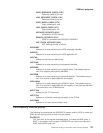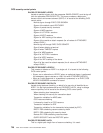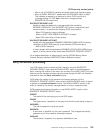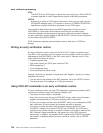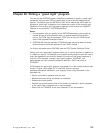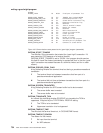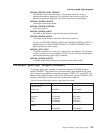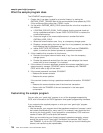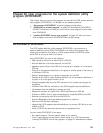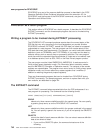
GNTRAN_PSEUDO_CONV_TRANSID
The identifier of the next transaction, if the terminal timed out during a
pseudoconversational sequence. (If the terminal did
not
time out during a
pseudoconversational sequence, the value of this field is meaningless.)
GNTRAN_SCREEN_LENGTH
The length of the screen buffer.
GNTRAN_CURSOR_POSITION
The cursor position.
GNTRAN_SCREEN_WIDTH
The width of the screen in use when the terminal timed out.
GNTRAN_SCREEN_HEIGHT
The height of the screen in use when the terminal timed out.
You can use GNTRAN_SCREEN_WIDTH and GNTRAN_SCREEN_HEIGHT to
decide whether to use the ERASE DEFAULT or ERASE ALTERNATE option
when restoring the user’s screen.
GNTRAN_USER_FIELD
This field is available for use by your “good night” user program. It is initialized
to binary zeroes and is not changed by CICS. You can use it to help develop a
pseudoconversational “good night” transaction.
GNTRAN_SCREEN_BUFFER
A variable length field containing the contents of the screen buffer.
The sample “good night” program, DFH0GNIT
The sample “good night” program is a pseudoconversational COBOL program
named DFH0GNIT. Copy books of the communications area passed to the “good
night” program are supplied in assembler language, COBOL, PL/I, and C/370. The
names of the supplied program, copy books, and mapset, and the CICSTS13.CICS
libraries in which they can be found, are summarized in Table 38.
Table 38. Sample “good night” program, copy books, and mapset
Language Member name Library
Program source:
COBOL only DFH0GNIT SDFHSAMP
Copy books:
Assembler
COBOL
PL/I
C/370
DFHSNGSD
DFHSNGSO
DFHSNGSL
DFHSNGSH
SDFHMAC
SDFHCOB
SDFHPL1
SDFHC370
Mapset:
DFH$GMAP SDFHSAMP
writing a good night program
Chapter 29. Writing a “good night” program 735



